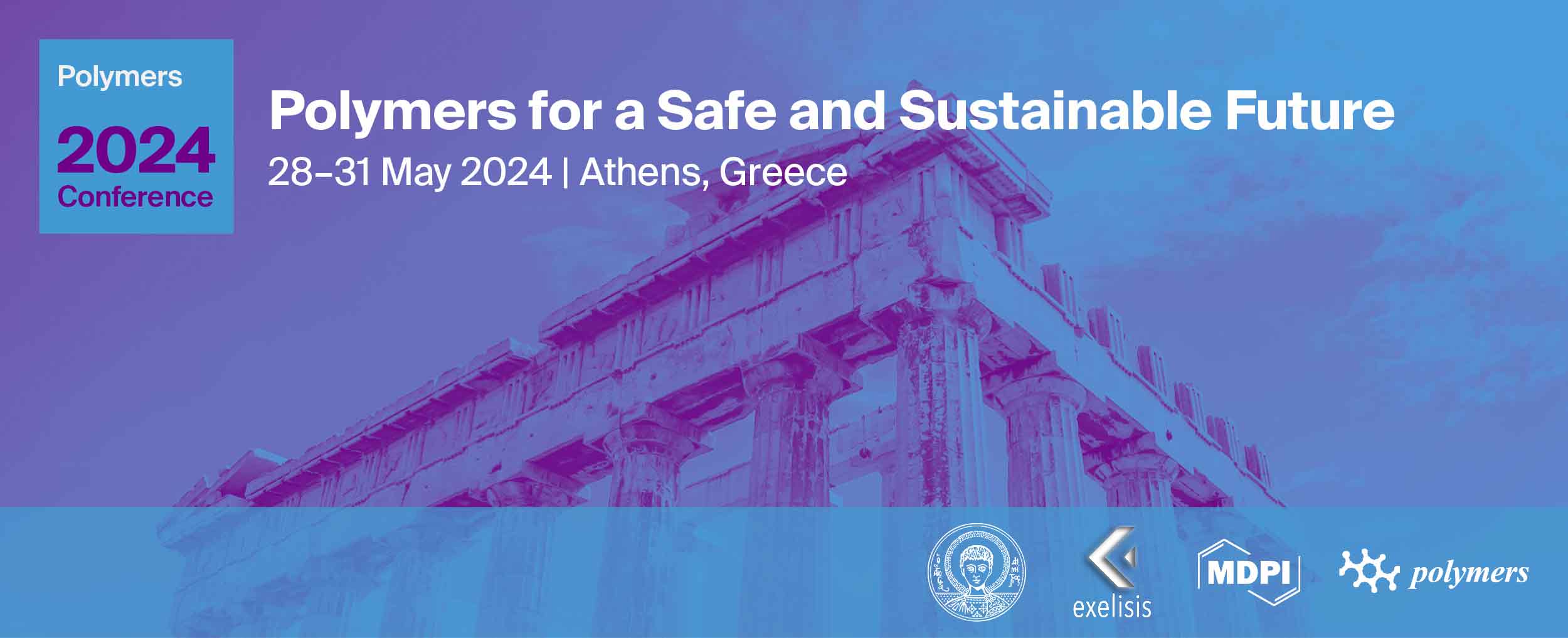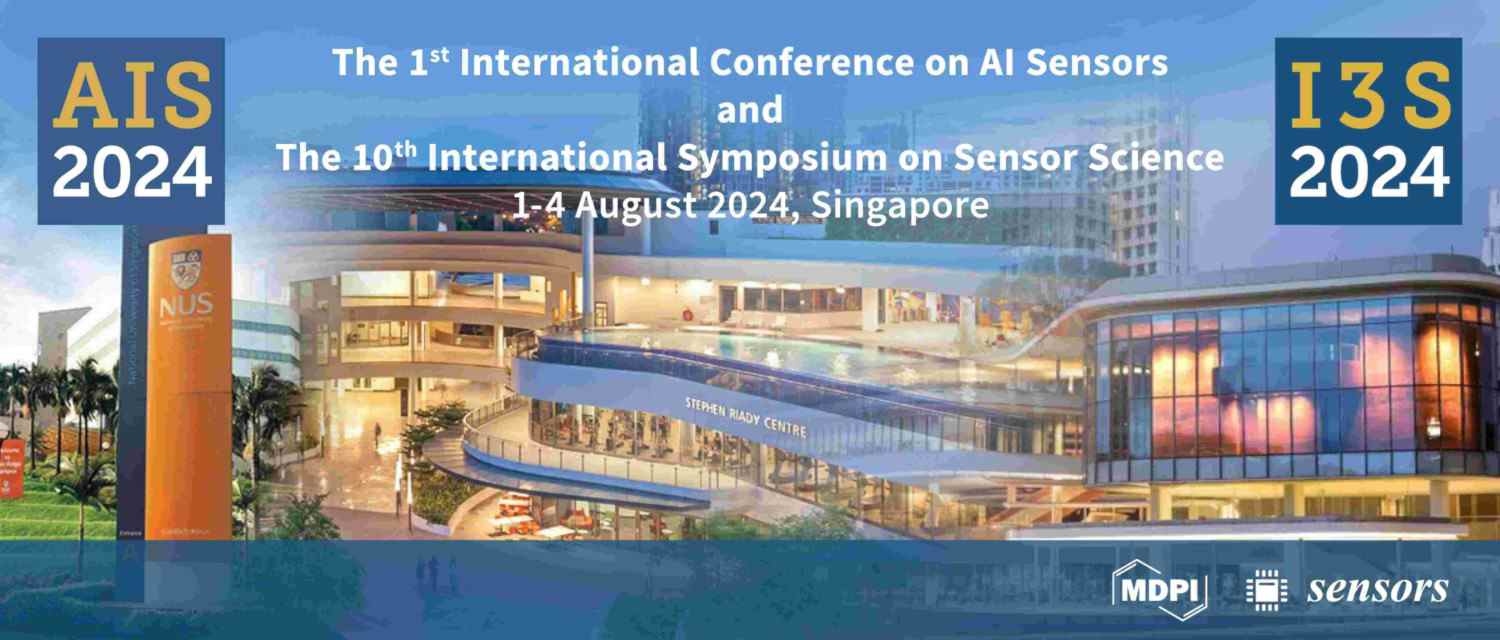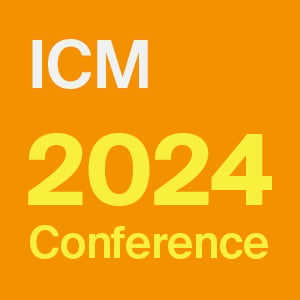-
 Short-Time Magnetron Sputtering for the Development of Carbon–Palladium Nanocomposites
Short-Time Magnetron Sputtering for the Development of Carbon–Palladium Nanocomposites -
 Photocatalysis Based on Metal Halide Perovskites for Organic Chemical Transformations
Photocatalysis Based on Metal Halide Perovskites for Organic Chemical Transformations -
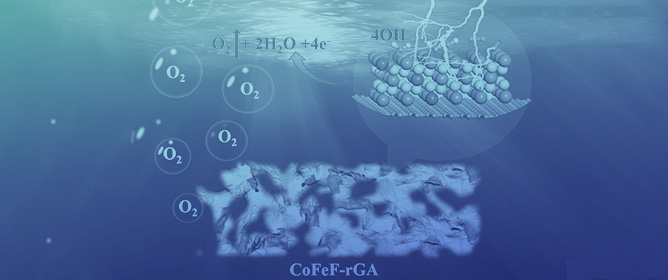 Graphene Architecture-Supported Porous Cobalt–Iron Fluoride Nanosheets for Promoting the Oxygen Evolution Reaction
Graphene Architecture-Supported Porous Cobalt–Iron Fluoride Nanosheets for Promoting the Oxygen Evolution Reaction -
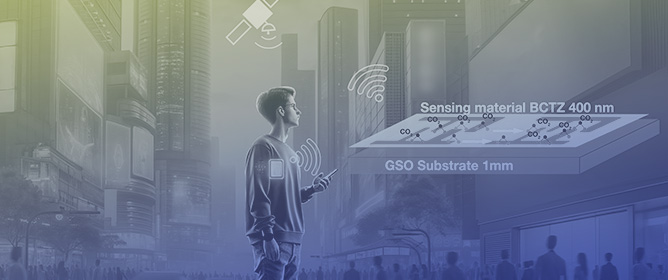 Lead-Free Perovskite Thin Films for Gas Sensing through Surface Acoustic Wave Device Detection
Lead-Free Perovskite Thin Films for Gas Sensing through Surface Acoustic Wave Device Detection -
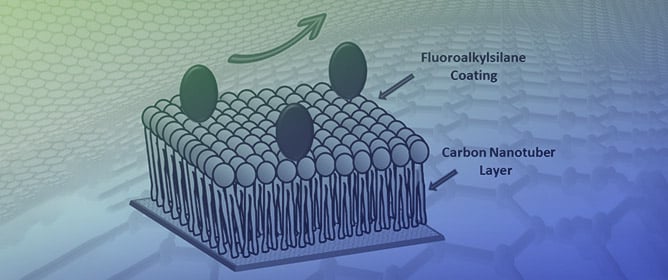 Development of a Carbon Nanotube-Enhanced FAS Bilayer Amphiphobic Coating for Biological Fluids
Development of a Carbon Nanotube-Enhanced FAS Bilayer Amphiphobic Coating for Biological Fluids
Journal Description
Nanomaterials
Nanomaterials
is an international, peer-reviewed, interdisciplinary scholarly open access journal, published semimonthly online by MDPI. It publishes reviews, regular research papers, communications, and short notes that are relevant to any field of study that involves nanomaterials, with respect to their science and application. The Spanish Carbon Group (GEC) is affiliated with Nanomaterials and their members receive discounts on the article processing charges.
- Open Access— free for readers, with article processing charges (APC) paid by authors or their institutions.
- High Visibility: indexed within Scopus, SCIE (Web of Science), PubMed, PMC, CAPlus / SciFinder, Inspec, and other databases.
- Journal Rank: JCR - Q1 (Physics, Applied) / CiteScore - Q1 (General Chemical Engineering)
- Rapid Publication: manuscripts are peer-reviewed and a first decision is provided to authors approximately 13.6 days after submission; acceptance to publication is undertaken in 2.5 days (median values for papers published in this journal in the second half of 2023).
- Recognition of Reviewers: reviewers who provide timely, thorough peer-review reports receive vouchers entitling them to a discount on the APC of their next publication in any MDPI journal, in appreciation of the work done.
- Companion journals for Nanomaterials include: Nanomanufacturing and Applied Nano.
Impact Factor:
5.3 (2022);
5-Year Impact Factor:
5.4 (2022)
Latest Articles
A MOF-Templated Double-Shelled Co3O4/NiCo2O4 Nanocomposite for Electrochemical Detection of Alfuzosin
Nanomaterials 2024, 14(9), 757; https://doi.org/10.3390/nano14090757 (registering DOI) - 25 Apr 2024
Abstract
We developed a novel electrochemical sensor for the detection of alfuzosin (AFZ), a drug used to treat benign prostatic hyperplasia, using a double-shelled Co3O4/NiCo2O4 nanocomposite-modified electrode. The nanocomposites were synthesized using a template-assisted approach, with zeolitic
[...] Read more.
We developed a novel electrochemical sensor for the detection of alfuzosin (AFZ), a drug used to treat benign prostatic hyperplasia, using a double-shelled Co3O4/NiCo2O4 nanocomposite-modified electrode. The nanocomposites were synthesized using a template-assisted approach, with zeolitic imidazole framework-67 (ZIF-67) as the sacrificial template, involving the formation of uniform ZIF-67/Ni-Co layered double hydroxide (LDH) hollow structures followed by calcination to achieve the final nanocomposite. The nanocomposite was characterized by various techniques and showed high porosity, large surface area, and good conductivity. The nanocomposite-modified electrode exhibited excellent electrocatalytic activity towards AFZ oxidation, with a wide linear range of 5–180 µM and a low limit of detection of 1.37 µM. The sensor also demonstrated good repeatability, reproducibility, and stability selectivity in the presence of common interfering substances. The sensor was successfully applied to determine the AFZ in pharmaceutical tablets and human serum samples, with satisfactory recoveries. Our results suggest that the double-shelled Co3O4/NiCo2O4 nanocomposite is a promising material for the fabrication of electrochemical sensors for AFZ detection.
Full article
(This article belongs to the Special Issue Trends in Electrochemical Nanosensing)
Open AccessReview
The Effectiveness Mechanisms of Carbon Nanotubes (CNTs) as Reinforcements for Magnesium-Based Composites for Biomedical Applications: A Review
by
Abbas Saberi, Madalina Simona Baltatu and Petrica Vizureanu
Nanomaterials 2024, 14(9), 756; https://doi.org/10.3390/nano14090756 (registering DOI) - 25 Apr 2024
Abstract
As a smart implant, magnesium (Mg) is highly biocompatible and non-toxic. In addition, the elastic modulus of Mg relative to other biodegradable metals (iron and zinc) is close to the elastic modulus of natural bone, making Mg an attractive alternative to hard tissues.
[...] Read more.
As a smart implant, magnesium (Mg) is highly biocompatible and non-toxic. In addition, the elastic modulus of Mg relative to other biodegradable metals (iron and zinc) is close to the elastic modulus of natural bone, making Mg an attractive alternative to hard tissues. However, high corrosion rates and low strength under load relative to bone are some challenges for the widespread use of Mg in orthopedics. Composite fabrication has proven to be an excellent way to improve the mechanical performance and corrosion control of Mg. As a result, their composites emerge as an innovative biodegradable material. Carbon nanotubes (CNTs) have superb properties like low density, high tensile strength, high strength-to-volume ratio, high thermal conductivity, and relatively good antibacterial properties. Therefore, using CNTs as reinforcements for the Mg matrix has been proposed as an essential option. However, the lack of understanding of the mechanisms of effectiveness in mechanical, corrosion, antibacterial, and cellular fields through the presence of CNTs as Mg matrix reinforcements is a challenge for their application. This review focuses on recent findings on Mg/CNT composites fabricated for biological applications. The literature mentions effective mechanisms for mechanical, corrosion, antimicrobial, and cellular domains with the presence of CNTs as reinforcements for Mg-based nanobiocomposites.
Full article
(This article belongs to the Special Issue Preparation, Separation, Characterization and Application of Carbon Nanotubes)
Open AccessArticle
Uniaxial Magnetization and Electrocatalytic Performance for Hydrogen Evolution on Electrodeposited Ni Nanowire Array Electrodes with Ultra-High Aspect Ratio
by
Yumu Sako, Ryusei Saeki, Masamitsu Hayashida and Takeshi Ohgai
Nanomaterials 2024, 14(9), 755; https://doi.org/10.3390/nano14090755 (registering DOI) - 25 Apr 2024
Abstract
Ni nanowire array electrodes with an extremely large surface area were made through an electrochemical reduction process utilizing an anodized alumina template with a pore length of 320 µm, pore diameter of 100 nm, and pore aspect ratio of 3200. The electrodeposited Ni
[...] Read more.
Ni nanowire array electrodes with an extremely large surface area were made through an electrochemical reduction process utilizing an anodized alumina template with a pore length of 320 µm, pore diameter of 100 nm, and pore aspect ratio of 3200. The electrodeposited Ni nanowire arrays were preferentially oriented in the (111) plane regardless of the deposition potential and exhibited uniaxial magnetic anisotropy with easy magnetization in the axial direction. With respect to the magnetic properties, the squareness and coercivity of the electrodeposited Ni nanowire arrays improved up to 0.8 and 550 Oe, respectively. It was also confirmed that the magnetization reversal was suppressed by increasing the aspect ratio and the hard magnetic performance was improved. The electrocatalytic performance for hydrogen evolution on the electrodeposited Ni nanowire arrays was also investigated and the hydrogen overvoltage was reduced down to ~0.1 V, which was almost 0.2 V lower than that on the electrodeposited Ni films. Additionally, the current density for hydrogen evolution at −1.0 V and −1.5 V vs. Ag/AgCl increased up to approximately −580 A/m2 and −891 A/m2, respectively, due to the extremely large surface area of the electrodeposited Ni nanowire arrays.
Full article
(This article belongs to the Special Issue Advances in Nanostructured Electrode Materials: Design and Applications)
Open AccessArticle
Binder-Free Three-Dimensional Porous Graphene Cathodes via Self-Assembly for High-Capacity Lithium–Oxygen Batteries
by
Yanna Liu, Wen Meng, Yuying Gao, Menglong Zhao, Ming Li and Liang Xiao
Nanomaterials 2024, 14(9), 754; https://doi.org/10.3390/nano14090754 (registering DOI) - 25 Apr 2024
Abstract
The porous architectures of oxygen cathodes are highly desired for high-capacity lithium–oxygen batteries (LOBs) to support cathodic catalysts and provide accommodation for discharge products. However, controllable porosity is still a challenge for laminated cathodes with cathode materials and binders, since polymer binders usually
[...] Read more.
The porous architectures of oxygen cathodes are highly desired for high-capacity lithium–oxygen batteries (LOBs) to support cathodic catalysts and provide accommodation for discharge products. However, controllable porosity is still a challenge for laminated cathodes with cathode materials and binders, since polymer binders usually shield the active sites of catalysts and block the pores of cathodes. In addition, polymer binders such as poly(vinylidene fluoride) (PVDF) are not stable under the nucleophilic attack of intermediate product superoxide radicals in the oxygen electrochemical environment. The parasitic reactions and blocking effect of binders deteriorate and then quickly shut down the operation of LOBs. Herein, the present work proposes a binder-free three-dimensional (3D) porous graphene (PG) cathode for LOBs, which is prepared by the self-assembly and the chemical reduction of GO with triblock copolymer soft templates (Pluronic F127). The interconnected mesoporous architecture of resultant 3D PG cathodes achieved an ultrahigh capacity of 10,300 mAh g−1 for LOBs. Further, the cathodic catalysts ruthenium (Ru) and manganese dioxide (MnO2) were, respectively, loaded onto the inner surface of PG cathodes to lower the polarization and enhance the cycling performance of LOBs. This work provides an effective way to fabricate free-standing 3D porous oxygen cathodes for high-performance LOBs.
Full article
(This article belongs to the Section Energy and Catalysis)
Open AccessArticle
Additive Manufacturing of Electrically Conductive Multi-Layered Nanocopper in an Air Environment
by
David Pervan, Anil Bastola, Robyn Worsley, Ricky Wildman, Richard Hague, Edward Lester and Christopher Tuck
Nanomaterials 2024, 14(9), 753; https://doi.org/10.3390/nano14090753 (registering DOI) - 25 Apr 2024
Abstract
The additive manufacturing (AM) of functional copper (Cu) parts is a major goal for many industries, from aerospace to automotive to electronics, because Cu has a high thermal and electrical conductivity as well as being ~10× cheaper than silver. Previous studies on AM
[...] Read more.
The additive manufacturing (AM) of functional copper (Cu) parts is a major goal for many industries, from aerospace to automotive to electronics, because Cu has a high thermal and electrical conductivity as well as being ~10× cheaper than silver. Previous studies on AM of Cu have concentrated mainly on high-energy manufacturing processes such as Laser Powder Bed Fusion, Electron Beam Melting, and Binder Jetting. These processes all require high-temperature heat treatment in an oxygen-free environment. This paper shows an AM route to multi-layered microparts from novel nanoparticle (NP) Cu feedstocks, performed in an air environment, employing a low-power (<10 W) laser sintering process. Cu NP ink was deposited using two mechanisms, inkjet printing, and bar coating, followed by low-power laser exposure to induce particle consolidation. Initial parts were manufactured to a height of approximately 100 µm, which was achieved by multi-layer printing of 15 (bar-coated) to 300 (inkjetted) layers. There was no evidence of oxidised copper in the sintered material, but they were found to be low-density, porous structures. Nonetheless, electrical resistivity of ~28 × 10−8 Ω m was achieved. Overall, the aim of this study is to offer foundational knowledge for upscaling the process to additively manufacture Cu 3D parts of significant size via sequential nanometal ink deposition and low-power laser processing.
Full article
(This article belongs to the Special Issue Editorial Board Members’ Collection Series: New Trends in Inorganic Nanoparticles and Composites from Preparation to Applications)
Open AccessArticle
Enhancing the Photocatalytic Activity of Halide Perovskite Cesium Bismuth Bromide/Hydrogen Titanate Heterostructures for Benzyl Alcohol Oxidation
by
Huzaikha Awang, Abdo Hezam, Tim Peppel and Jennifer Strunk
Nanomaterials 2024, 14(9), 752; https://doi.org/10.3390/nano14090752 (registering DOI) - 25 Apr 2024
Abstract
Halide perovskite Cs3Bi2Br9 (CBB) has excellent potential in photocatalysis due to its promising light-harvesting properties. However, its photocatalytic performance might be limited due to the unfavorable charge carrier migration and water-induced properties, which limit the stability and photocatalytic
[...] Read more.
Halide perovskite Cs3Bi2Br9 (CBB) has excellent potential in photocatalysis due to its promising light-harvesting properties. However, its photocatalytic performance might be limited due to the unfavorable charge carrier migration and water-induced properties, which limit the stability and photocatalytic performance. Therefore, we address this constraint in this work by synthesizing a stable halide perovskite heterojunction by introducing hydrogen titanate nanosheets (H2Ti3O7-NS, HTiO-NS). Optimizing the weight % (wt%) of CBB enables synthesizing the optimal CBB/HTiO-NS, CBHTNS heterostructure. The detailed morphology and structure characterization proved that the cubic shape of CBB is anchored on the HTiO-NS surface. The 30 wt% CBB/HTiO-NS-30 (CBHTNS-30) heterojunction showed the highest BnOH photooxidation performance with 98% conversion and 75% benzoic acid (BzA) selectivity at 2 h under blue light irradiation. Detailed optical and photoelectrochemical characterization showed that the incorporating CBB and HTiO-NS widened the range of the visible-light response and improved the ability to separate the photo-induced charge carriers. The presence of HTiO-NS has increased the oxidative properties, possibly by charge separation in the heterojunction, which facilitated the generation of superoxide and hydroxyl radicals. A possible reaction pathway for the photocatalytic oxidation of BnOH to BzH and BzA was also suggested. Furthermore, through scavenger experiments, we found that the photogenerated h+, e− and •O2− play an essential role in the BnOH photooxidation, while the •OH have a minor effect on the reaction. This work may provide a strategy for using HTiO-NS-based photocatalyst to enhance the charge carrier migration and photocatalytic performance of CBB.
Full article
(This article belongs to the Special Issue Perovskite Nanostructures: Synthesis, Properties and Applications)
►▼
Show Figures

Figure 1
Open AccessArticle
Fe,Ni-Based Metal–Organic Frameworks Embedded in Nanoporous Nitrogen-Doped Graphene as a Highly Efficient Electrocatalyst for the Oxygen Evolution Reaction
by
Panjuan Tang, Biagio Di Vizio, Jijin Yang, Bhushan Patil, Mattia Cattelan and Stefano Agnoli
Nanomaterials 2024, 14(9), 751; https://doi.org/10.3390/nano14090751 (registering DOI) - 25 Apr 2024
Abstract
The quest for economically sustainable electrocatalysts to replace critical materials in anodes for the oxygen evolution reaction (OER) is a key goal in electrochemical conversion technologies, and, in this context, metal–organic frameworks (MOFs) offer great promise as alternative electroactive materials. In this study,
[...] Read more.
The quest for economically sustainable electrocatalysts to replace critical materials in anodes for the oxygen evolution reaction (OER) is a key goal in electrochemical conversion technologies, and, in this context, metal–organic frameworks (MOFs) offer great promise as alternative electroactive materials. In this study, a series of nanostructured electrocatalysts was successfully synthesized by growing tailored Ni-Fe-based MOFs on nitrogen-doped graphene, creating composite systems named MIL-NG-n. Their growth was tuned using a molecular modulator, revealing a non-trivial trend of the properties as a function of the modulator quantity. The most active material displayed an excellent OER performance characterized by a potential of 1.47 V (vs. RHE) to reach 10 mA cm−2, a low Tafel slope (42 mV dec−1), and a stability exceeding 18 h in 0.1 M KOH. This outstanding performance was attributed to the synergistic effect between the unique MOF architecture and N-doped graphene, enhancing the amount of active sites and the electron transfer. Compared to a simple mixture of MOFs and N-doped graphene or the deposition of Fe and Ni atoms on the N-doped graphene, these hybrid materials demonstrated a clearly superior OER performance.
Full article
(This article belongs to the Special Issue Advances in Nanoscale Electrocatalysts)
►▼
Show Figures
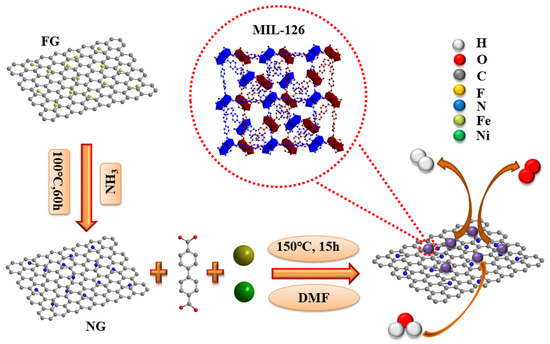
Figure 1
Open AccessArticle
Evolution of the Electronic Properties of Tellurium Crystals with Plasma Irradiation Treatment
by
Congzhi Bi, Tianyu Wu, Jingjing Shao, Pengtao Jing, Hai Xu, Jilian Xu, Wenxi Guo, Yufei Liu and Da Zhan
Nanomaterials 2024, 14(9), 750; https://doi.org/10.3390/nano14090750 (registering DOI) - 25 Apr 2024
Abstract
Tellurium exhibits exceptional intrinsic electronic properties. However, investigations into the modulation of tellurium’s electronic properties through physical modification are notably scarce. Here, we present a comprehensive study focused on the evolution of the electronic properties of tellurium crystal flakes under plasma irradiation treatment
[...] Read more.
Tellurium exhibits exceptional intrinsic electronic properties. However, investigations into the modulation of tellurium’s electronic properties through physical modification are notably scarce. Here, we present a comprehensive study focused on the evolution of the electronic properties of tellurium crystal flakes under plasma irradiation treatment by employing conductive atomic force microscopy and Raman spectroscopy. The plasma-treated tellurium experienced a process of defect generation through lattice breaking. Prior to the degradation of electronic transport performance due to plasma irradiation treatment, we made a remarkable observation: in the low-energy region of hydrogen plasma-treated tellurium, a notable enhancement in conductivity was unexpectedly detected. The mechanism underlying this enhancement in electronic transport performance was thoroughly elucidated by comparing it with the electronic structure induced by argon plasma irradiation. This study not only fundamentally uncovers the effects of plasma irradiation on tellurium crystal flakes but also unearths an unprecedented trend of enhanced electronic transport performance at low irradiation energies when utilizing hydrogen plasma. This abnormal trend bears significant implications for guiding the prospective application of tellurium-based 2D materials in the realm of electronic devices.
Full article
(This article belongs to the Special Issue Low-Dimensional Semiconductor Nanomaterials: Preparation, Characterization, and Application)
►▼
Show Figures
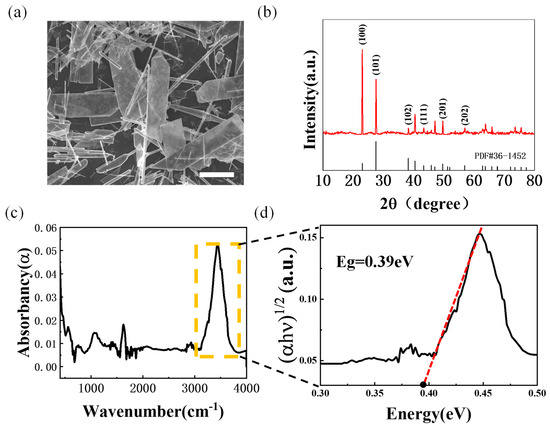
Figure 1
Open AccessArticle
Characterization of a Chimeric Resilin-Elastin Structural Protein Dedicated to 3D Bioprinting as a Bioink Component
by
Violetta Cecuda-Adamczewska, Agnieszka Romanik-Chruścielewska, Katarzyna Kosowska, Natalia Łukasiewicz, Iwona Sokołowska, Paulina Korycka, Katarzyna Florys-Jankowska, Agnieszka Zakrzewska, Michał Wszoła and Marta Klak
Nanomaterials 2024, 14(9), 749; https://doi.org/10.3390/nano14090749 (registering DOI) - 25 Apr 2024
Abstract
In this study we propose to use for bioprinting a bioink enriched with a recombinant RE15mR protein with a molecular weight of 26 kDa, containing functional sequences derived from resilin and elastin. The resulting protein also contains RGD sequences in its structure, as
[...] Read more.
In this study we propose to use for bioprinting a bioink enriched with a recombinant RE15mR protein with a molecular weight of 26 kDa, containing functional sequences derived from resilin and elastin. The resulting protein also contains RGD sequences in its structure, as well as a metalloproteinase cleavage site, allowing positive interaction with the cells seeded on the construct and remodeling the structure of this protein in situ. The described protein is produced in a prokaryotic expression system using an E. coli bacterial strain and purified by a process using a unique combination of known methods not previously used for recombinant elastin-like proteins. The positive effect of RE15mR on the mechanical, physico-chemical, and biological properties of the print is shown in the attached results. The addition of RE15mR to the bioink resulted in improved mechanical and physicochemical properties and promoted the habitation of the prints by cells of the L-929 line.
Full article
(This article belongs to the Topic Advanced Functional Materials for Regenerative Medicine)
►▼
Show Figures
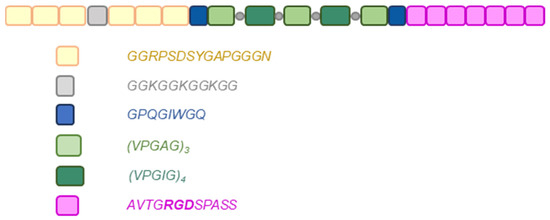
Figure 1
Open AccessArticle
Effects of Miscut on Step Instabilities in Homo-Epitaxially Grown GaN
by
Peng Wu, Jianping Liu, Fangzhi Li, Xiaoyu Ren, Aiqin Tian, Wei Zhou, Fan Zhang, Xuan Li, Bolin Zhou, Masao Ikeda and Hui Yang
Nanomaterials 2024, 14(9), 748; https://doi.org/10.3390/nano14090748 (registering DOI) - 25 Apr 2024
Abstract
The rough morphology at the growth surface results in the non-uniform distribution of indium composition, intentionally or unintentionally doped impurity, and thus impacts the performance of GaN-based optoelectronic and vertical power electronic devices. We observed the morphologies of unintentionally doped GaN homo-epitaxially grown
[...] Read more.
The rough morphology at the growth surface results in the non-uniform distribution of indium composition, intentionally or unintentionally doped impurity, and thus impacts the performance of GaN-based optoelectronic and vertical power electronic devices. We observed the morphologies of unintentionally doped GaN homo-epitaxially grown via MOCVD and identified the relations between rough surfaces and the miscut angle and direction of the substrate. The growth kinetics under the effect of the Ehrlich–Schwoebel barrier were studied, and it was found that asymmetric step motions in samples with a large miscut angle or those grown at high temperature were the causes of step-bunching. Meandering steps were believed to be caused by surface free energy minimization for steps with wide terraces or deviating from the
(This article belongs to the Special Issue III-Nitride Semiconductors: Design, Characterization, Applications, and Devices)
►▼
Show Figures
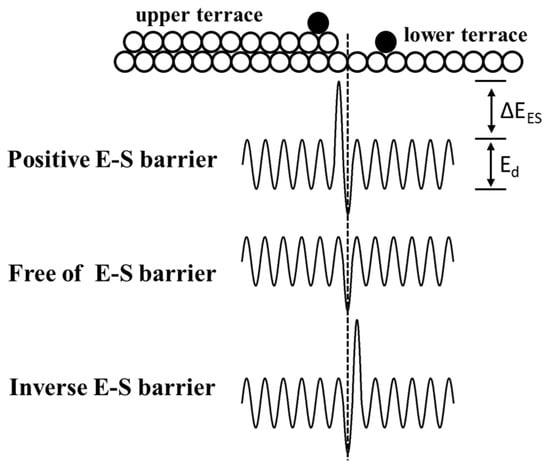
Figure 1
Open AccessArticle
Enhancement of ZT in Bi0.5Sb1.5Te3 Thin Film through Lattice Orientation Management
by
Wei-Han Tsai, Cheng-Lung Chen, Ranganayakulu K. Vankayala, Ying-Hsiang Lo, Wen-Pin Hsieh, Te-Hsien Wang, Ssu-Yen Huang and Yang-Yuan Chen
Nanomaterials 2024, 14(9), 747; https://doi.org/10.3390/nano14090747 (registering DOI) - 25 Apr 2024
Abstract
Thermoelectric power can convert heat and electricity directly and reversibly. Low-dimensional thermoelectric materials, particularly thin films, have been considered a breakthrough for separating electronic and thermal transport relationships. In this study, a series of Bi0.5Sb1.5Te3 thin films with
[...] Read more.
Thermoelectric power can convert heat and electricity directly and reversibly. Low-dimensional thermoelectric materials, particularly thin films, have been considered a breakthrough for separating electronic and thermal transport relationships. In this study, a series of Bi0.5Sb1.5Te3 thin films with thicknesses of 0.125, 0.25, 0.5, and 1 μm have been fabricated by RF sputtering for the study of thickness effects on thermoelectric properties. We demonstrated that microstructure (texture) changes highly correlate with the growth thickness in the films, and equilibrium annealing significantly improves the thermoelectric performance, resulting in a remarkable enhancement in the thermoelectric performance. Consequently, the 0.5 μm thin films achieve an exceptional power factor of 18.1 μWcm−1K−2 at 400 K. Furthermore, we utilize a novel method that involves exfoliating a nanosized film and cutting with a focused ion beam, enabling precise in-plane thermal conductivity measurements through the 3ω method. We obtain the in-plane thermal conductivity as low as 0.3 Wm−1K−1, leading to a maximum ZT of 1.86, nearing room temperature. Our results provide significant insights into advanced thin-film thermoelectric design and fabrication, boosting high-performance systems.
Full article
(This article belongs to the Special Issue Study on the Thermoelectric Properties of Nanostructured Materials)
►▼
Show Figures
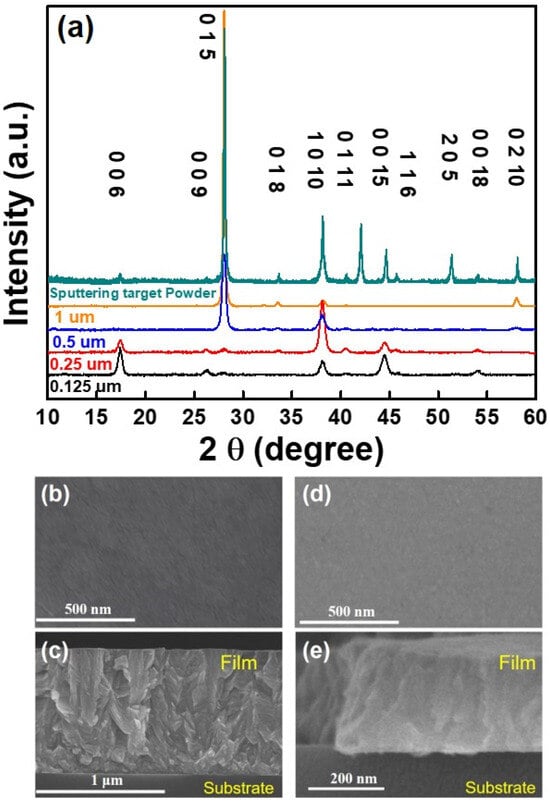
Figure 1
Open AccessArticle
Size Effects of Copper Oxide Nanoparticles on Boosting Soybean Growth via Differentially Modulating Nitrogen Assimilation
by
Yaozu Guo, Hao Li, Yi Hao, Heping Shang, Weili Jia, Anqi Liang, Xinxin Xu, Chunyang Li and Chuanxin Ma
Nanomaterials 2024, 14(9), 746; https://doi.org/10.3390/nano14090746 (registering DOI) - 25 Apr 2024
Abstract
Nanoscale agrochemicals have been widely used in sustainable agriculture and may potentially affect the nitrogen fixation process in legume crops. The present study investigated the size-effects of copper oxide nanoparticles (CuO NPs) on nitrogen assimilation in soybean (G. max (L.) Merrill) plants,
[...] Read more.
Nanoscale agrochemicals have been widely used in sustainable agriculture and may potentially affect the nitrogen fixation process in legume crops. The present study investigated the size-effects of copper oxide nanoparticles (CuO NPs) on nitrogen assimilation in soybean (G. max (L.) Merrill) plants, which were treated with different sizes (20 and 50 nm) of CuO NPs at low use doses (1 and 10 mg/kg) for 21 days under greenhouse conditions. The results showed that 50 nm CuO NPs significantly increased the fresh biomass more than 20 nm CuO NPs achieved at 10 mg/kg. The activities of N assimilation-associated enzymes and the contents of nitrogenous compounds, including nitrates, proteins, and amino acids, in soybean tissues were greatly increased across all the CuO NP treatments. The use doses of two sizes of CuO NPs had no impact on the Cu contents in shoots and roots but indeed increased the Cu contents in soils in a dose-dependent fashion. Overall, our findings demonstrated that both 20 and 50 nm CuO NPs could positively alter soybean growth and boost N assimilation, furthering our understanding that the application of nanoscale micro-nutrient-related agrochemicals at an optimal size and dose will greatly contribute to increasing the yield and quality of crops.
Full article
(This article belongs to the Special Issue Environmental Analysis and Environmental Processes of Nanomaterials)
►▼
Show Figures
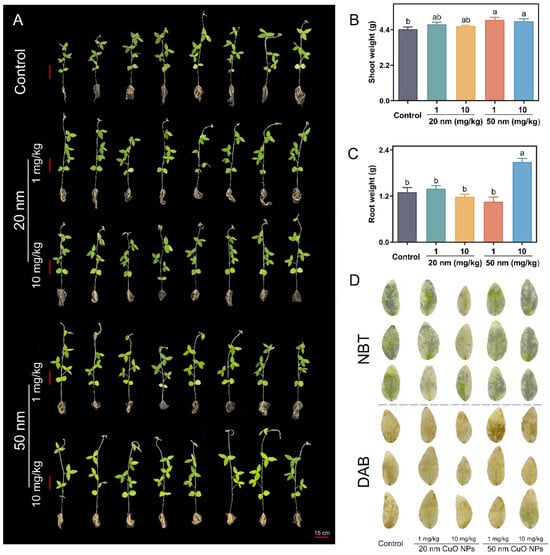
Figure 1
Open AccessArticle
Development of Light, Strong, and Water-Resistant PVA Composite Aerogels
by
Amir Abdolazizi, Ishara Wijesinghe, Ifra Marriam, Hiran Chathuranga, Dmitri Golberg and Cheng Yan
Nanomaterials 2024, 14(9), 745; https://doi.org/10.3390/nano14090745 - 24 Apr 2024
Abstract
A significant weakness of many organic and inorganic aerogels is their poor mechanical behaviour, representing a great impediment to their application. For example, polymer aerogels generally have higher ductility than silica aerogels, but their elastic modulus is considered too low. Herein, we developed
[...] Read more.
A significant weakness of many organic and inorganic aerogels is their poor mechanical behaviour, representing a great impediment to their application. For example, polymer aerogels generally have higher ductility than silica aerogels, but their elastic modulus is considered too low. Herein, we developed extremely low loading (<1 wt%) 2D graphene oxide (GO) nanosheets modified poly (vinyl alcohol) (PVA) aerogels via a facile and environmentally friendly method. The aerogel shows a 9-fold increase in compressional modulus compared to a pure polymer aerogel. With a low density of 0.04 mg/mm3 and a thermal conductivity of only 0.035 W/m·K, it outperforms many commercial insulators and foams. As compared to a pure PVA polymer aerogel, a 170% increase in storage modulus is obtained by adding only 0.6 wt% GO nanosheets. The nanocomposite aerogel demonstrates strong fire resistance, with a 50% increase in burning time and little smoke discharge. After surface modification with 1H,1H,2H,2H-Perfluorodecyltriethoxysilane, the aerogel demonstrates water resistance, which is suitable for outdoor applications in which it would be exposed to precipitation. Our research demonstrates a new pathway for considerable improvement in the performance and application of polymer aerogels.
Full article
Open AccessArticle
Nitrogen-Doped Porous Carbon Derived from Covalent Triazine Framework for Catalytic Oxidation of Benzyl Alcohol
by
Xin Pan, Yanan Zhu, Yongchang Yang and Qianqian Zhu
Nanomaterials 2024, 14(9), 744; https://doi.org/10.3390/nano14090744 - 24 Apr 2024
Abstract
The catalytic oxidation of alcohols is an important transformation in the chemical industry. Carbon materials with a large surface area and N doping show great promise as metal-free catalysts for the reaction. In this study, a rich N-containing covalent triazine framework polymerized by
[...] Read more.
The catalytic oxidation of alcohols is an important transformation in the chemical industry. Carbon materials with a large surface area and N doping show great promise as metal-free catalysts for the reaction. In this study, a rich N-containing covalent triazine framework polymerized by cyanuric chloride and p-phenylenediamine was used to synthesize N-doped porous carbon with the assistance of a pore-forming agent—NaCl. First, the mass ratio of the polymer/NaCl was optimized to 1:9. Then, the influence of the pyrolysis temperatures (700–1000 °C) on the materials was studied in detail. It was found that the carbon materials were gradually exfoliated by molten salt at high temperatures. XRD and Raman characterizations showed them with a certain graphitization. The optimal doped carbon CNN-1-9-900 achieved the highest surface area of 199.03 m2g−1 with the largest pore volume of 0.29 cm3g−1. Furthermore, it had a high N content of 9.9 at% with the highest relative proportion of pyridinic/graphitic N. Due to the synergistic effect between the surface area and pyridinic/graphitic N, CNN-1-9-900 showed the best performance for benzyl alcohol oxidation with TBHP at moderate conditions, and the process also worked for its derivatives.
Full article
(This article belongs to the Section 2D and Carbon Nanomaterials)
►▼
Show Figures
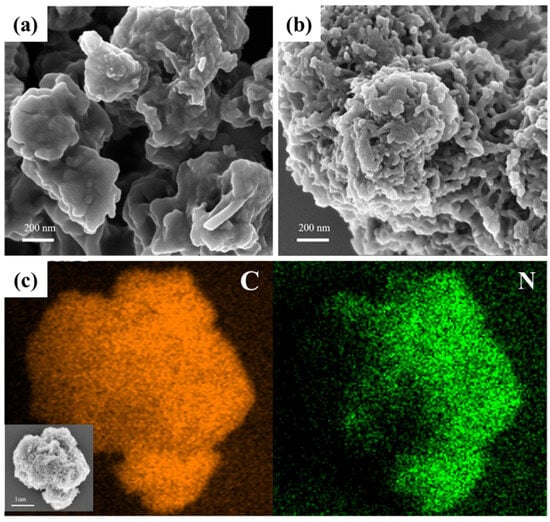
Figure 1
Open AccessArticle
A Systematic Genotoxicity Assessment of a Suite of Metal Oxide Nanoparticles Reveals Their DNA Damaging and Clastogenic Potential
by
Silvia Aidee Solorio-Rodriguez, Dongmei Wu, Andrey Boyadzhiev, Callum Christ, Andrew Williams and Sabina Halappanavar
Nanomaterials 2024, 14(9), 743; https://doi.org/10.3390/nano14090743 - 24 Apr 2024
Abstract
Metal oxide nanoparticles (MONP/s) induce DNA damage, which is influenced by their physicochemical properties. In this study, the high-throughput CometChip and micronucleus (MicroFlow) assays were used to investigate DNA and chromosomal damage in mouse lung epithelial cells induced by nano and bulk sizes
[...] Read more.
Metal oxide nanoparticles (MONP/s) induce DNA damage, which is influenced by their physicochemical properties. In this study, the high-throughput CometChip and micronucleus (MicroFlow) assays were used to investigate DNA and chromosomal damage in mouse lung epithelial cells induced by nano and bulk sizes of zinc oxide, copper oxide, manganese oxide, nickel oxide, aluminum oxide, cerium oxide, titanium dioxide, and iron oxide. Ionic forms of MONPs were also included. The study evaluated the impact of solubility, surface coating, and particle size on response. Correlation analysis showed that solubility in the cell culture medium was positively associated with response in both assays, with the nano form showing the same or higher response than larger particles. A subtle reduction in DNA damage response was observed post-exposure to some surface-coated MONPs. The observed difference in genotoxicity highlighted the mechanistic differences in the MONP-induced response, possibly influenced by both particle stability and chemical composition. The results highlight that combinations of properties influence response to MONPs and that solubility alone, while playing an important role, is not enough to explain the observed toxicity. The results have implications on the potential application of read-across strategies in support of human health risk assessment of MONPs.
Full article
(This article belongs to the Special Issue New Approach Methodologies for the Toxicity Assessment of Nanomaterials)
Open AccessArticle
Improvement of Thermal Stability and Photoelectric Performance of Cs2PbI2Cl2/CsPbI2.5Br0.5 Perovskite Solar Cells by Triple-Layer Inorganic Hole Transport Materials
by
Yu Liu, Bicui Li, Jia Xu and Jianxi Yao
Nanomaterials 2024, 14(9), 742; https://doi.org/10.3390/nano14090742 - 24 Apr 2024
Abstract
Conventional hole transport layer (HTL) Spiro-OMeTAD requires the addition of hygroscopic dopants due to its low conductivity and hole mobility, resulting in a high preparation cost and poor device stability. Cuprous thiocyanate (CuSCN) is a cost-effective alternative with a suitable energy structure and
[...] Read more.
Conventional hole transport layer (HTL) Spiro-OMeTAD requires the addition of hygroscopic dopants due to its low conductivity and hole mobility, resulting in a high preparation cost and poor device stability. Cuprous thiocyanate (CuSCN) is a cost-effective alternative with a suitable energy structure and high hole mobility. However, CuSCN-based perovskite solar cells (PSCs) are affected by environmental factors, and the solvents of an HTL can potentially corrode the perovskite layer. In this study, a Co3O4/CuSCN/Co3O4 sandwich structure was proposed as an HTL for inorganic Cs2PbI2Cl2/CsPbI2.5Br0.5 PSCs to address these issues. The Co3O4 layers can serve as buffer and encapsulation layers, protecting the perovskite layer from solvent-induced corrosion and enhancing hole mobility at the interface. Based on this sandwich structure, the photovoltaic performances of the Cs2PbI2Cl2/CsPbI2.5Br0.5 PSCs are significantly improved, with the power conversion efficiency (PCE) increasing from 9.87% (without Co3O4) to 11.06%. Furthermore, the thermal stability of the devices is also significantly enhanced, retaining 80% of its initial PCE after 40 h of continuous aging at 60 °C. These results indicate that the Co3O4/CuSCN/Co3O4 sandwich structure can effectively mitigate the corrosion of the perovskite layer by solvents of an HTL and significantly improves the photovoltaic performance and thermal stability of devices.
Full article
(This article belongs to the Special Issue Recent Advances in the Thermal, Electrical and Thermoelectric Properties of Nanomaterials)
►▼
Show Figures
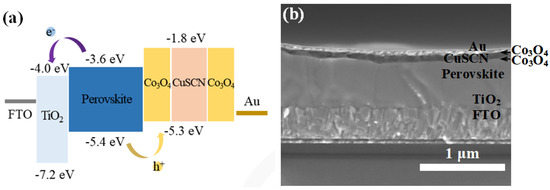
Figure 1
Open AccessArticle
Mechanochemical Solid-State Immobilization of Photofunctional Dyes on Amorphous Silica Particles and Investigation of Their Interactive Mechanisms
by
Reo Kimura, Sunao Chatani, Masahiko Inui, Satoshi Motozuka, Iori Yamada and Motohiro Tagaya
Nanomaterials 2024, 14(9), 741; https://doi.org/10.3390/nano14090741 - 24 Apr 2024
Abstract
►▼
Show Figures
Amorphous silica particles (ASPs) have been reported to exhibit bioactive properties and are becoming the focus of attention as bioceramics. However, their interactions with proteins in living organisms remain to be understood and need to be investigated in order to achieve wider applications.
[...] Read more.
Amorphous silica particles (ASPs) have been reported to exhibit bioactive properties and are becoming the focus of attention as bioceramics. However, their interactions with proteins in living organisms remain to be understood and need to be investigated in order to achieve wider applications. Our research group found that chlorine (Cl)-containing ASPs are useful for protein immobilization. Photofunctional dyes (fluorescein (FS−), methylene blue (MB+)) that have the carboxy and amino groups as the main functional groups were immobilized on the Cl-containing ASPs via the mechanochemical method as the model molecule and their spectral properties were used to investigate and discuss the organic/inorganic interfacial bonding states. In FS−, the oxygen atoms of the carboxy groups in the molecule were immobilized by the hydrogen bonds with the silanol groups on the ASPs surfaces, indicating that there is an optimum Cl content for the immobilization as the monomer state. In the case of MB+, as the Cl concentration in the ASPs increases, the immobilization via the electrostatic interactions between the Cl in the ASPs and the terminal dimethylamino group, and the hydrogen bonding between the N atoms of the MB+ hetero ring and the particle silanol group were enhanced. These results mainly suggest that the protein adsorption system occurs through the hydrogen bonding between the carboxy groups of the protein and the silanol groups on the particles and via electrostatic interactions between the amino groups of the protein and the dissociated silanol groups and the contained Cl at the particles. Thus, the spectral characterization using dyes as probes is expected to predict the protein interactions with the amorphous silica particles.
Full article
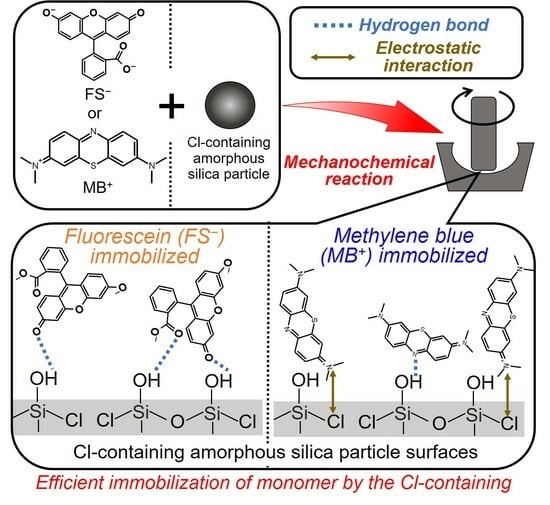
Graphical abstract
Open AccessArticle
Luminescent/Temperature-Sensing Properties of Multifunctional Rare-Earth Upconversion Kevlar Nanofiber Composite under 1550 nm
by
Juan Li, Shengang Xu, Yingliang Liu and Shaokui Cao
Nanomaterials 2024, 14(9), 740; https://doi.org/10.3390/nano14090740 - 24 Apr 2024
Abstract
The unique properties of upconversion nanoparticles (UCNPs) are responsible for their diverse applications in photonic materials, medicine, analytics, and energy conversion. In this study, water-soluble rare-earth upconversion nanomaterials emitting green, yellow, and red light under 1550 nm excitation were synthesized. These nanomaterials were
[...] Read more.
The unique properties of upconversion nanoparticles (UCNPs) are responsible for their diverse applications in photonic materials, medicine, analytics, and energy conversion. In this study, water-soluble rare-earth upconversion nanomaterials emitting green, yellow, and red light under 1550 nm excitation were synthesized. These nanomaterials were then integrated into water-soluble Kevlar nanofibers (KNFs) to fabricate ultra-thin composite films exhibiting favorable mechanical characteristics. The characterization of the products, along with their luminescent, mechanical, and temperature-sensing properties, was examined. The results indicate that the composite material exhibited varying colors based on the doped nanoparticles when subjected to 1550 nm excitation. The composite showed highly sensitive temperature-sensing properties, excellent luminescent characteristics, and superior mechanical strength. This study suggests that KNFs are effective carriers of UCNPs. This study offers a reference for the utilization of rare-earth upconversion in anti-counterfeiting displays, wearable health monitoring, and remote temperature sensing.
Full article
(This article belongs to the Special Issue Advanced Nanocomposites for Sensing Applications)
►▼
Show Figures
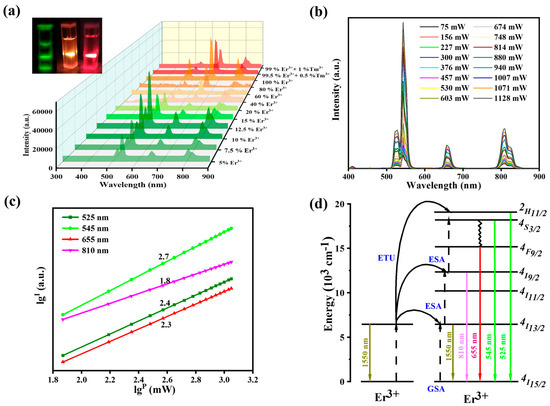
Figure 1
Open AccessArticle
Study on Spectrum Shifting and Pulse Splitting of Mode-Locked Fiber Lasers Based on NPR Technology
by
Zhenhua Hao, Yu Hu, Siyu Zhou, Jinhui Liu, Xiaohui Li, Yishan Wang and Cunxiao Gao
Nanomaterials 2024, 14(9), 739; https://doi.org/10.3390/nano14090739 - 23 Apr 2024
Abstract
We conducted a systematic investigation into the spectral and pulse characteristics of C and L-band Nonlinear Polarization Rotation (NPR) mode-locked fiber lasers effectively employing nonlinear polarization rotation technology. In our experimental setup, we achieved a stable mode-locked state at 1560.076 nm, exhibiting a
[...] Read more.
We conducted a systematic investigation into the spectral and pulse characteristics of C and L-band Nonlinear Polarization Rotation (NPR) mode-locked fiber lasers effectively employing nonlinear polarization rotation technology. In our experimental setup, we achieved a stable mode-locked state at 1560.076 nm, exhibiting a 3 dB spectral bandwidth of 9.1 nm. As the pump power increased, we observed spectral shifts accompanied by shifts in the first Kelly sideband and the generation of new Kelly sidebands. In this paper, the phenomenon of spectral deviation is elucidated through the interplay of self-phase modulation, group velocity drift, and polarization-dependent isolator (PD-ISO) filter effect, with an analysis of the formation and deviation of Kelly sidebands. Notably, spectral shift persisted even when the pump power exceeded 200 mW. However, continuous pump power escalation led to soliton splitting, resulting in the formation of new soliton beams. Based on the simultaneous generation of spectral shift and pulse splitting, our study contributes to an enhanced understanding of soliton dynamics in ultrafast fiber lasers and lays a foundation for the application of high-repetition-frequency harmonic mode-locked lasers with tunable wavelengths.
Full article
(This article belongs to the Special Issue Nonlinear Optical Materials in Fundamental Science and Practical Applications)
►▼
Show Figures

Figure 1
Open AccessArticle
Enhancing Multi-Spectral Fingerprint Sensing for Trace Explosive Molecules with All-Silicon Metasurfaces
by
Jie Lin, Ying Xue, Weijin Wang, Mingjun Sun, Shengnan Shi, Shan Zhang and Yanpeng Shi
Nanomaterials 2024, 14(9), 738; https://doi.org/10.3390/nano14090738 - 23 Apr 2024
Abstract
Spectroscopy is a powerful tool to identify the specific fingerprints of analytes in a label-free way. However, conventional sensing methods face unavoidable barriers in analyzing trace-amount target molecules due to the difficulties of enhancing the broadband molecular absorption. Here, we propose a sensing
[...] Read more.
Spectroscopy is a powerful tool to identify the specific fingerprints of analytes in a label-free way. However, conventional sensing methods face unavoidable barriers in analyzing trace-amount target molecules due to the difficulties of enhancing the broadband molecular absorption. Here, we propose a sensing scheme to achieve strong fingerprint absorption based on the angular-scanning strategy on an all-silicon metasurface. By integrating the mid-infrared and terahertz sensing units into a single metasurface, the sensor can efficiently identify 2,4-DNT with high sensitivity. The results reveal that the fingerprint peak in the enhanced fingerprint spectrum is formed by the linked envelope. It exhibits a significant enhancement factor exceeding 64-fold in the terahertz region and more than 55-fold in the mid-infrared region. Particularly, the corresponding identification limit of 2,4-DNT is 1.32 µg cm−2, respectively. Our study will provide a novel research idea in identifying trace-amount explosives and advance practical applications of absorption spectroscopy enhancement identification in civil and military security industries.
Full article
(This article belongs to the Special Issue Nanomaterials for Terahertz Technology Applications)
►▼
Show Figures

Figure 1

Journal Menu
► ▼ Journal Menu-
- Nanomaterials Home
- Aims & Scope
- Editorial Board
- Reviewer Board
- Topical Advisory Panel
- Instructions for Authors
- Special Issues
- Topics
- Sections & Collections
- Article Processing Charge
- Indexing & Archiving
- Editor’s Choice Articles
- Most Cited & Viewed
- Journal Statistics
- Journal History
- Journal Awards
- Society Collaborations
- Conferences
- Editorial Office
Journal Browser
► ▼ Journal BrowserHighly Accessed Articles
Latest Books
E-Mail Alert
News
Topics
Topic in
Applied Sciences, Energies, Materials, Nanoenergy Advances, Nanomaterials
Applications of Nanomaterials in Energy Systems, 2nd Volume
Topic Editors: Eleftheria C. Pyrgioti, Ioannis F. Gonos, Diaa-Eldin A. MansourDeadline: 30 April 2024
Topic in
Materials, Nanomaterials, Photonics, Polymers, Applied Sciences, Sensors
Optical and Optoelectronic Properties of Materials and Their Applications
Topic Editors: Zhiping Luo, Gibin George, Navadeep ShrivastavaDeadline: 20 May 2024
Topic in
Biomedicines, Cancers, JFB, Nanomaterials, Polymers
Advanced Functional Materials for Regenerative Medicine
Topic Editors: Antonino Morabito, Luca ValentiniDeadline: 6 June 2024
Topic in
Cancers, Cells, JCM, Radiation, Pharmaceutics, Applied Sciences, Nanomaterials, Current Oncology
Innovative Radiation Therapies
Topic Editors: Gérard Baldacchino, Eric Deutsch, Marie Dutreix, Sandrine Lacombe, Erika Porcel, Charlotte Robert, Emmanuelle Bourneuf, João Santos Sousa, Aurélien de la LandeDeadline: 30 June 2024

Conferences
Special Issues
Special Issue in
Nanomaterials
Sustainability in Nanomaterials and Photonics Research
Guest Editors: Kunyan Zhang, Na Zhang, Bartolomeu Cruz VianaDeadline: 27 April 2024
Special Issue in
Nanomaterials
Nano-Photonics and Meta-Nanomaterials
Guest Editor: Suchand SandeepDeadline: 10 May 2024
Special Issue in
Nanomaterials
Applications of Nanomaterials in Biomedical Imaging and Cancer Therapy II
Guest Editor: James ChowDeadline: 20 May 2024
Special Issue in
Nanomaterials
Hierarchical Nanostructured Materials for Multifunctional Applications
Guest Editor: Xusheng DuDeadline: 31 May 2024
Topical Collections
Topical Collection in
Nanomaterials
Process Intensification, Process Design and Green Techniques for Nanomaterials Production and Applications
Collection Editors: Marco Stoller, Giorgio Vilardi
Topical Collection in
Nanomaterials
Magnetic Nanostructured Materials: Synthesis, Characterization and Their Cutting-Edge Applications
Collection Editors: Vasileios Tzitzios, Georgia Basina
Topical Collection in
Nanomaterials
The Fourth State of Engineering: Nanoengineered Materials and Coatings Facilitated by Plasma Techniques
Collection Editors: Krasimir Vasilev, Kostya (Ken) Ostrikov, Thomas Michl, Akash Bachhuka
Topical Collection in
Nanomaterials
Nanoarchitectonics of the Fourth Fundamental Electronic Component: Memristor, Meminductor and Memcapacitor
Collection Editors: Firman Simanjuntak, Yao-Feng Chang, Sridhar Chandrasekaran






